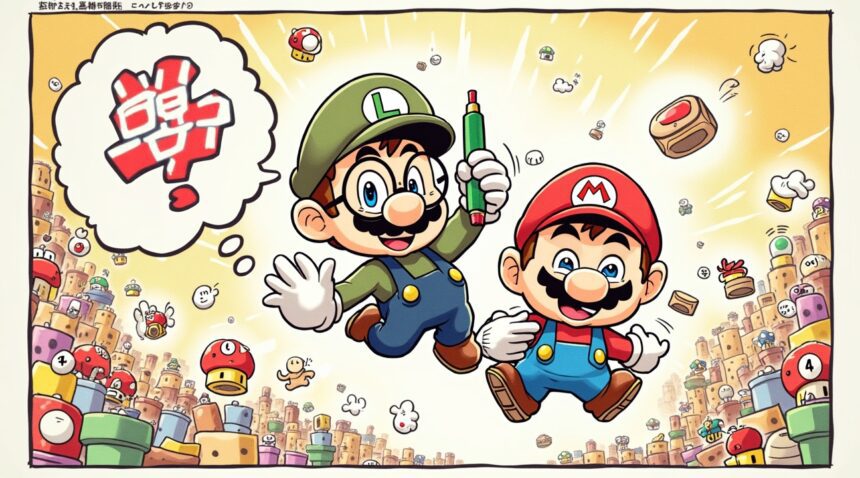Kazuki Motoyama, the prolific manga creator who brought Super Mario to life in print form for more than a decade, has passed away at the age of 69, leaving behind a legendary legacy in the world of video game adaptations.
Legacy of a Super Mario Manga Pioneer
From 1988 to 1998, Kazuki Motoyama created an astonishing total of 183 Super Mario stories for Kodansha’s Comic BomBom magazine. His tenure made him the most prolific contributor to Super Mario manga of that era. Motoyama was known for his incredible ability to capture the spirit of Nintendo’s characters while infusing his work with humor and creativity that resonated with readers of all ages.
Distinctive Artistry and Style
Motoyama’s unique storytelling blended meta-humor with frequent fourth-wall-breaking, giving his work a fresh and innovative voice. These elements not only reflected the playful nature of the Mario games but also highlighted his understanding of the source material.
Key Takeaways
- Motoyama authored 183 Super Mario manga stories during his creative run from 1988 to 1998, solidifying his role as a pivotal figure in the Super Mario manga world.
- He served as both writer and illustrator, showcasing a talent that went beyond narrative and into visually distinctive artwork filled with references to gaming culture.
- Born in 1956, he left art college to pursue a career in manga, debuting professionally in 1977 and later specializing in adaptations of Nintendo properties.
- In the early 2010s, he battled serious health issues such as complications from diabetes and heart surgery, prompting his move to Nagano Prefecture to recuperate.
- Motoyama’s legacy went beyond comics; he also served as a television supervisor for RKB Mainichi Broadcasting’s “Fukuoka Chronicle,” overseeing 336 episodes over seven years.
A Lasting Influence
Motoyama’s influence in the manga world, especially in the realm of video game storytelling, is undeniable. His vision helped propel Nintendo characters from digital platforms into printed stories that captivated audiences internationally. His passing marks the end of an era, but his work continues to inspire both artists and fans alike.
A Decade-Long Run That Defined Super Mario in Print
From December 1988 to September 1998, Kazuki Motoyama established himself as the definitive voice of Super Mario in manga form through his work in Kodansha’s Comic BomBom magazine. His decade-long commitment produced an impressive 183 stories, making him the most prolific creator of Super Mario manga adaptations during that transformative era for the franchise.
The Artist Behind the Adventures
Motoyama took on dual responsibilities as both writer and illustrator, crafting each story from conception to final artwork. This hands-on approach allowed him to maintain consistent creative vision throughout his extensive run. While his work existed alongside other Super Mario manga series like Super Mario-kun by Yukio Sawada, Motoyama’s contributions carved out their own distinct identity in the crowded field of video game adaptations.
A Distinctive Creative Voice
What set Motoyama’s work apart wasn’t just its longevity but its unique artistic approach. His distinctive art style gave Mario and his companions a fresh visual interpretation that differed from both Nintendo’s official artwork and other manga adaptations. The series became particularly noted for its meta humor, breaking the fourth wall and acknowledging the video game origins of its characters in ways that resonated with readers who were deeply familiar with the source material.
The success of Motoyama’s Super Mario manga during this period coincided with the character’s explosive popularity in various media formats. As Nintendo expanded Mario’s presence across different entertainment platforms, Motoyama’s manga provided Japanese readers with their primary way to experience Mario’s adventures in print form.
His creative legacy didn’t end with Comic BomBom’s conclusion of the series. In 2019, decades after his original run ended, Motoyama launched Kinoppe-chan Forever as a self-published spinoff, demonstrating his continued passion for the Mario universe and his desire to keep creating within that familiar framework. This return to the franchise showed how deeply the world of Super Mario had influenced his artistic career and personal creative interests.
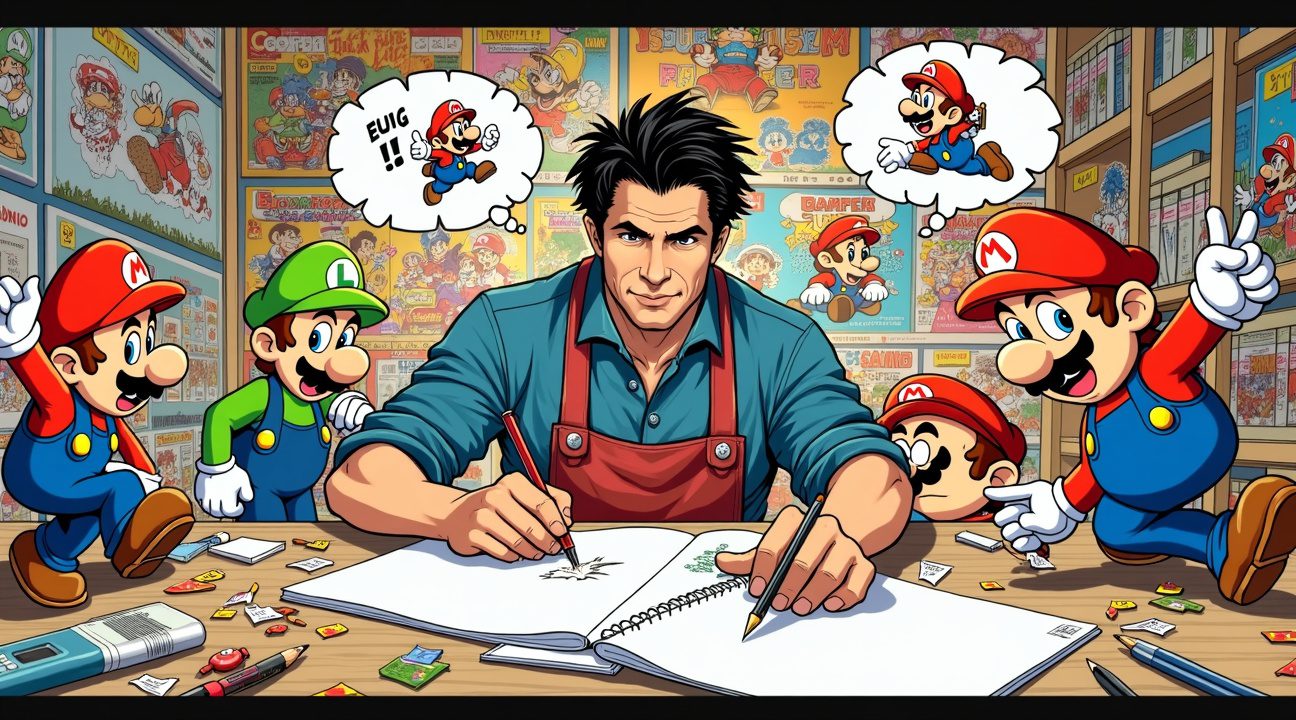
Unique Art Style and the Creation of Mototin
Motoyama’s distinctive artistic vision brought fresh life to the Super Mario universe through a lens that combined playful self-reference with genuinely quirky storytelling. His manga work stood apart from other Mario media adaptations through its willingness to break the fourth wall and inject meta-humor into familiar scenarios. The art style itself reflected this unconventional approach, featuring characters that maintained their recognizable features while expressing emotions and situations in ways that felt both authentic and surprisingly humorous.
The Birth and Evolution of Mototin
The creation of Mototin represented perhaps Motoyama’s most personal contribution to the Mario universe. Initially conceived as a simple self-caricature, this character quickly evolved into something more substantial—a chibi avatar distinguished by spiral glasses and a pen-themed hat that became instantly recognizable to fans. Mototin served as Motoyama’s vehicle for direct commentary on his own creative process, often appearing in strips to offer observations about drawing Mario characters or to provide humorous asides about the challenges of adapting video game logic into comic format.
Motoyama’s family connections enriched his creative environment in meaningful ways. His sister Lisa contributed to several strips, bringing her own perspective to the collaborative process. The broader family included remarkable individuals like folklorist Katsuragawa Motoyama and agricultural scientist Enri Hayashi, suggesting that creativity and intellectual curiosity ran deep in the family lineage. These influences likely contributed to the layered nature of his humor, which operated on multiple levels simultaneously.
Cultural Impact and Fan Reception
The cultural significance of Motoyama’s reinterpretations extended beyond simple entertainment value. Fans responded differently to his work compared to other Super Mario adaptations because his approach acknowledged the inherent absurdity of the Mario universe while celebrating it. Rather than attempting to create serious dramatic stakes from platforming scenarios, he embraced the playful nature of the source material and amplified it through clever visual gags and character interactions.
His legacy in manga circles demonstrates how effective reinterpretation can honor source material while creating something genuinely new. The humor in his strips often relied on characters recognizing their own fictional nature or commenting on video game conventions, creating a reading experience that felt both familiar and refreshingly unexpected. This approach influenced how other creators thought about adapting game properties, showing that successful adaptation doesn’t require literal translation but rather understanding the spirit of the original work.
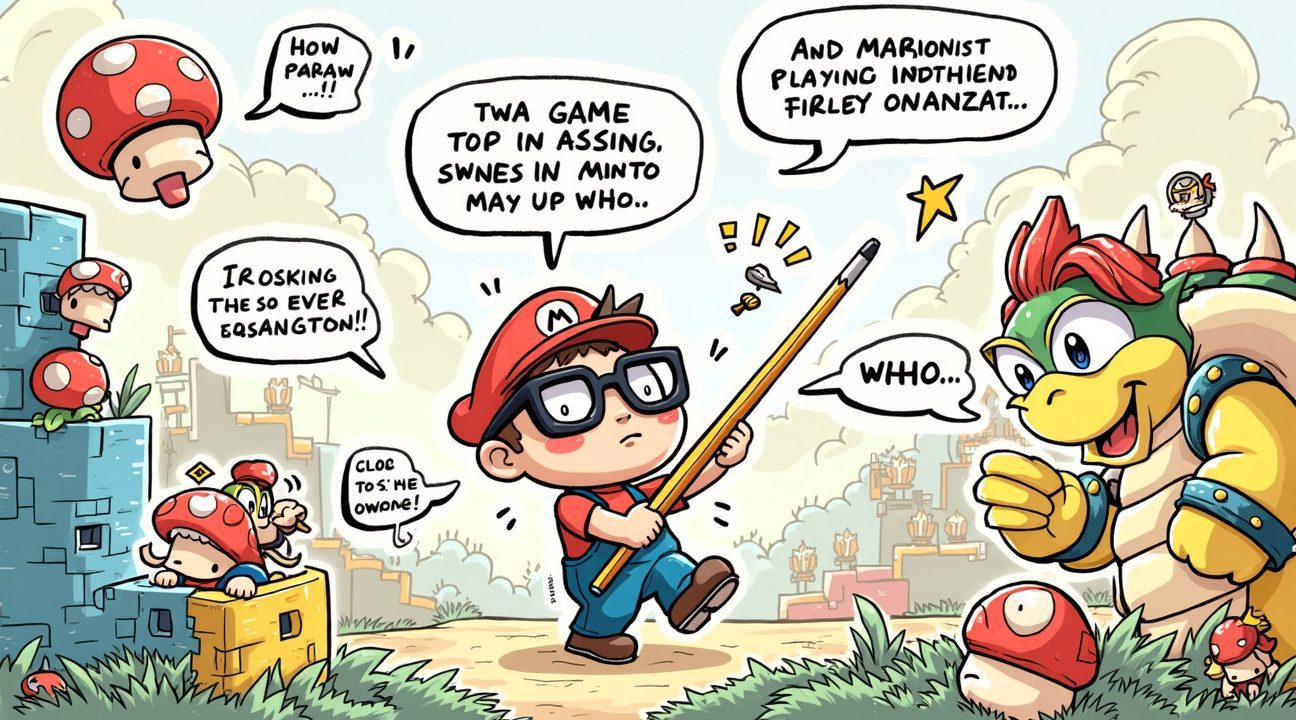
From Art Student to Manga Pioneer
Kazuki Motoyama’s path to becoming a manga legend began in the industrial city of Kawasaki, Kanagawa Prefecture, where he was born Masumi Motoyama on April 12, 1956. Growing up in nearby Yamato, he developed an early passion for visual storytelling that would eventually shape his career. His artistic journey took a decisive turn when he made the bold decision to leave Musashino Art University Junior College, abandoning traditional academic pursuits to pursue his dream of creating manga.
Breaking Into the Manga Industry
Rather than completing his formal education, Motoyama chose to learn directly from industry professionals by becoming an assistant to established mangaka Motoka Murakami. This hands-on apprenticeship provided him with invaluable insights into the demanding world of manga production, from character development to panel composition and deadline management.
His dedication paid off when he made his professional debut in 1977 with “Love and Mini”, marking the beginning of what would become an illustrious career. Two years later, he followed up with “Kimatenai no ni Kimemaru-kun” in 1979, establishing himself as a promising new voice in the manga industry.
Evolution of Artistic Vision
Motoyama’s early work focused primarily on romantic comedies and sports manga, genres that allowed him to showcase his talent for character-driven narratives and dynamic action sequences. These initial forays demonstrated his versatility as a storyteller and his ability to connect with diverse audiences. However, his artistic ambitions extended beyond these familiar territories.
As his career progressed, Motoyama began exploring more complex themes through historical works, displaying a deep appreciation for Japanese culture and heritage. This transition eventually led him to video game adaptations, where his work on the Super Mario Bros series would cement his legacy in popular culture.
His personal interests reflected his appreciation for Japanese craftsmanship and history. Among his prized possessions was a sword mounting from the prestigious Kuroda clan guard, valued at an impressive 4 million yen. This collection piece demonstrated his deep respect for traditional Japanese artistry, which often influenced the attention to detail evident in his manga work.
Motoyama’s journey from a college dropout to a respected manga creator illustrates the power of following one’s passion and learning through direct experience. His willingness to take risks and his commitment to continuous artistic growth laid the foundation for a career that would eventually bridge traditional manga storytelling with modern entertainment franchises.
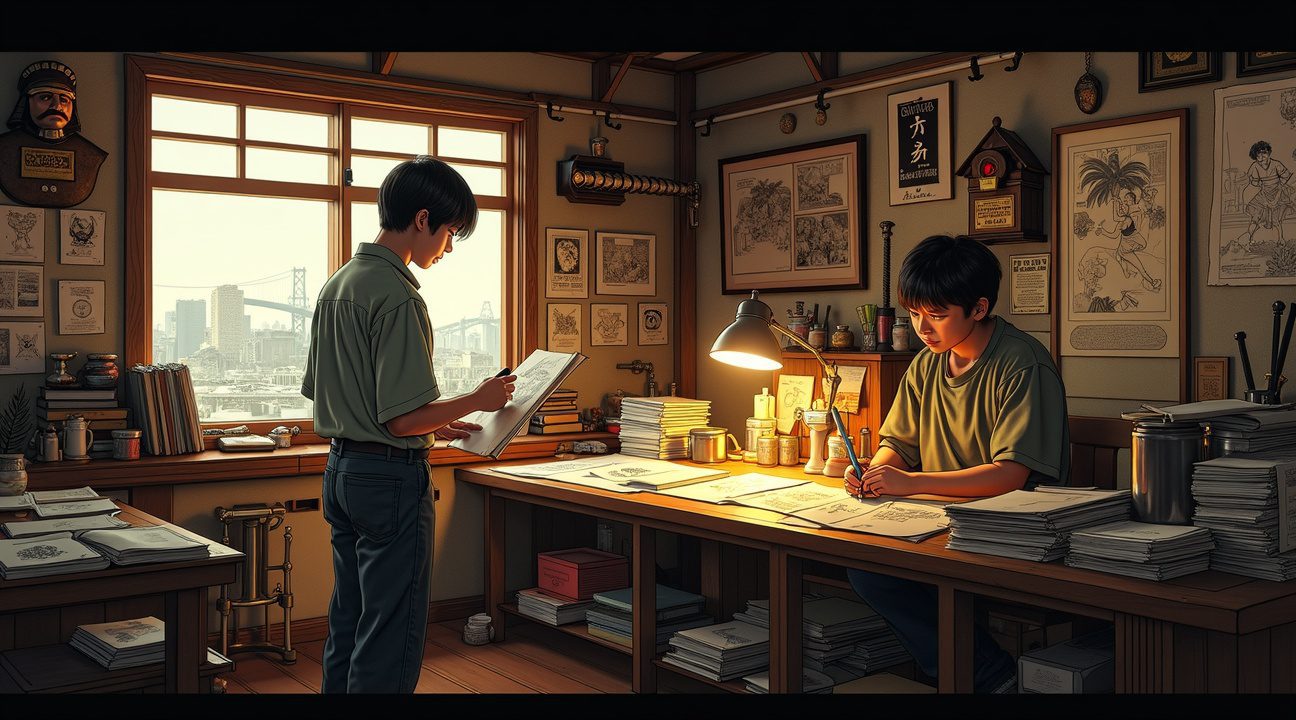
Health Challenges and Broadcasting Work
The early 2010s brought significant health challenges for Motoyama that would fundamentally alter his life and career trajectory. He faced hospitalization due to complications from diabetes, a condition that required careful management and lifestyle adjustments. Shortly after this initial health scare, he underwent heart surgery for acute myocardial infarction, a serious cardiovascular event that demanded extensive recovery time.
Recovery and Relocation
Following these critical health episodes, Motoyama made the strategic decision to relocate to Nagano Prefecture. This move represented more than a simple change of address—it marked a conscious effort to prioritize his health and well-being. The mountainous region offered him a quieter environment conducive to recovery, away from the demanding pace of Tokyo’s entertainment industry.
Despite facing these serious medical setbacks, Motoyama demonstrated remarkable resilience by maintaining his professional commitments. His determination to continue working showed the same creative spirit that had driven his success in Super Mario Bros projects throughout his career.
Television Supervision and Family Support
From October 2013, Motoyama took on supervisory duties for RKB Mainichi Broadcasting’s Fukuoka Chronicle. This role allowed him to remain professionally engaged while accommodating his health needs. The program proved remarkably successful under his guidance, ultimately airing 336 episodes across seven years—a testament to his enduring creative vision and professional expertise.
Throughout these challenging years, Motoyama’s sister Lisa Motoyama played a crucial supporting role. She maintained her own connection to the manga industry through contributions to 4koma strips, a traditional Japanese four-panel comic format. Her presence provided essential family support during his recovery period, demonstrating the close bonds that sustained him through health difficulties.
Lisa’s continued involvement in creative work also helped maintain the family’s artistic legacy. Her contributions to the manga industry, while distinct from her brother’s video game work, represented a parallel creative path that honored their shared artistic heritage.
The combination of health challenges and family support shaped Motoyama’s later career phase significantly. His ability to adapt to new circumstances while continuing meaningful professional work reflected the same innovative thinking that had characterized his earlier contributions to Mario and Luigi entertainment properties.
His supervision of Fukuoka Chronicle demonstrated that creative vision could flourish even under physical constraints. The show’s seven-year run proved that his storytelling abilities transcended medium boundaries, extending from video games into television programming with equal effectiveness.
During this period, Motoyama’s approach to work necessarily became more selective and focused. Rather than pursuing multiple projects simultaneously, he concentrated his energy on the broadcasting work that could accommodate his health requirements while still allowing creative expression.
The diabetes management and post-surgical care required ongoing attention, but these challenges didn’t diminish his creative output quality. Instead, they seemed to refine his focus, leading to the sustained success of the television program under his supervision.
His relocation to Nagano Prefecture also provided inspiration for his later work. The natural beauty and slower pace of mountain life influenced his creative perspective, contributing fresh elements to projects like the Super Mario Bros movie discussions he remained involved with during this period.
The support system provided by Lisa and other family members proved essential during recovery phases. This network allowed him to maintain professional standards while prioritizing the health management necessary for long-term sustainability.
Motoyama’s experience during this period illustrated how creative professionals can adapt to significant life changes while maintaining their artistic contributions. His successful transition from intensive video game development to television supervision showed remarkable professional flexibility and personal determination.
Complete Manga Works and Publications
Kazuki Motoyama built an impressive publishing legacy spanning over four decades, creating works that captured the imagination of readers across multiple generations. His extensive catalog showcases both his versatility as a creator and his deep understanding of gaming culture.
Early Career and Original Works
Motoyama’s publishing journey began in the late 1970s with original creations that established his artistic foundation. Love and Mini (1977) marked his entry into professional manga creation, followed by Kimatenai no ni Kimemaru-kun (1979). These early works demonstrated his ability to craft engaging characters and storylines that would later influence his approach to video game adaptations.
The transition period proved crucial for developing his distinctive style. His early manga experience provided the storytelling skills necessary for translating interactive gaming experiences into sequential art format.
Nintendo Gaming Adaptations
Motoyama’s most significant contribution to manga came through his extensive Nintendo game adaptations, which brought beloved video game characters to print media. His major Nintendo-related publications include:
- Super Mario Kodansha Manga (1988–1998) – A decade-long series that became his signature work
- Super Mario Bros. 3 Kanzen Koryakuhon – A comprehensive strategy guide in manga format
- Super Mario Land 3 – Adapting the portable gaming experience for readers
- Super Mario Bros. 4: Super Mario World (multiple volumes) – Expanding on the console game’s storylines
- Super Mario Kart 3 – Bringing racing action to manga format
- Yoshi no Road Hunting – Focusing on the popular dinosaur character’s adventures
The Super Mario Kodansha Manga series represents his longest-running and most influential work. Running for ten years, this publication helped establish manga adaptations of video games as a legitimate genre. His approach combined faithful character representation with original storylines that expanded beyond the games’ narratives.
His strategy guides, particularly the Super Mario Bros. 3 Kanzen Koryakuhon, demonstrated his ability to merge entertainment with practical gaming advice. These publications served dual purposes as both entertainment and educational resources for players seeking to improve their gaming skills.
Motoyama’s later work includes Kinoppe-chan Forever, a self-published series that began in 2019. This project showcased his entrepreneurial spirit and continued creative drive well into his later years. Self-publishing allowed him complete creative control and demonstrated his commitment to reaching audiences directly.
His manga adaptations played a significant role in expanding Nintendo’s cultural influence beyond gaming consoles. These publications introduced Mario and related characters to readers who might not have accessed the original games, helping to build the broader cultural phenomenon that continues today. The Mario franchise’s expansion into movies and other media can trace its roots back to early cross-media efforts like Motoyama’s manga work.
The breadth of his Nintendo adaptations reveals his deep understanding of different gaming genres. From platformers to racing games, he successfully translated diverse gameplay mechanics into engaging visual narratives. His work on titles like Super Mario Kart 3 required adapting fast-paced racing action into static panels, while maintaining the excitement and competition central to the gaming experience.
Motoyama’s publication strategy often involved multiple volumes for single game adaptations, allowing for comprehensive exploration of game worlds and characters. This approach provided readers with substantial content while maximizing the commercial potential of each adaptation. His multi-volume treatment of Super Mario Bros. 4: Super Mario World exemplifies this thorough approach to game-to-manga translation.
His complete works catalog demonstrates remarkable consistency and productivity throughout his career. From his earliest original manga in 1977 to his self-published work in 2019, Motoyama maintained active publication schedules while adapting to changing industry trends and reader preferences.
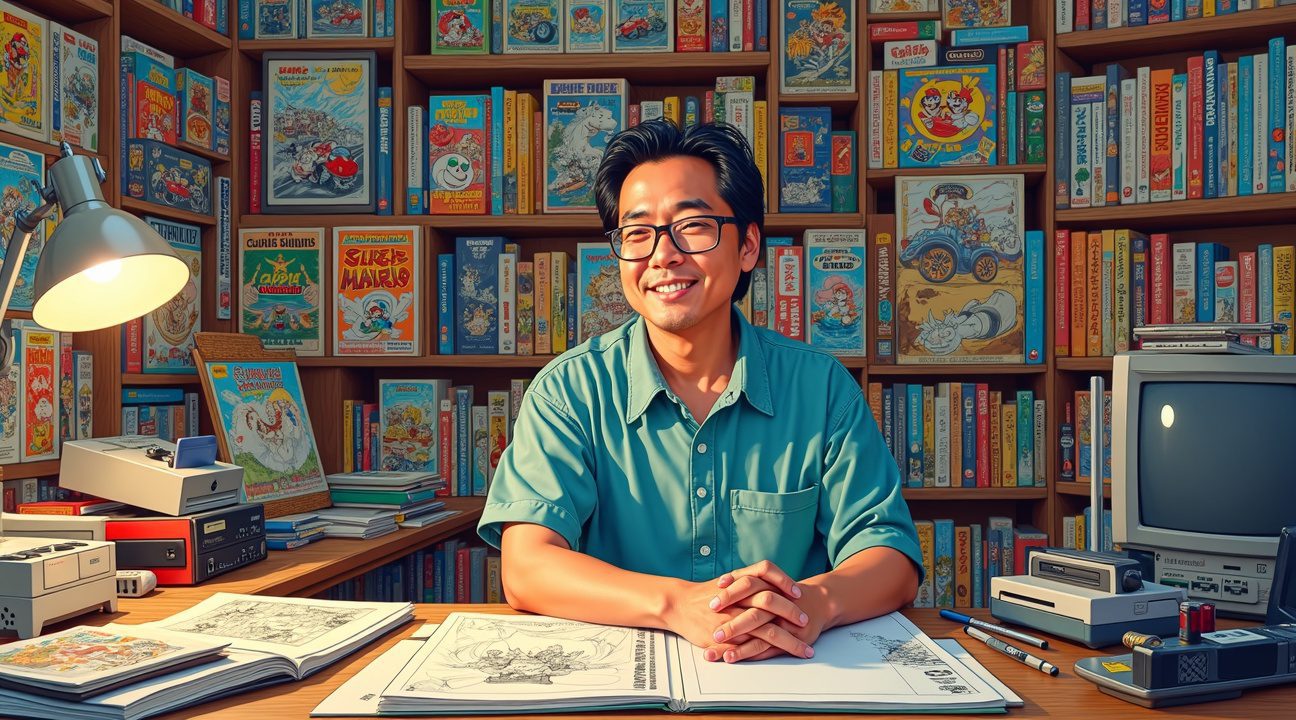
Sources:
Mario Wiki – “Kazuki Motoyama”
Nintendo Everything – “Super Mario manga creator Kazuki Motoyama has passed away”
IMDb – News on “Super Mario Bros.: Peach-Hime Kyushutsu Dai Sakusen!”
Screen Rant – “Kazuki Motoyama, Super Mario Artist, Dies At 69”
YouTube – “Remembering Kazuki Motoyama”

